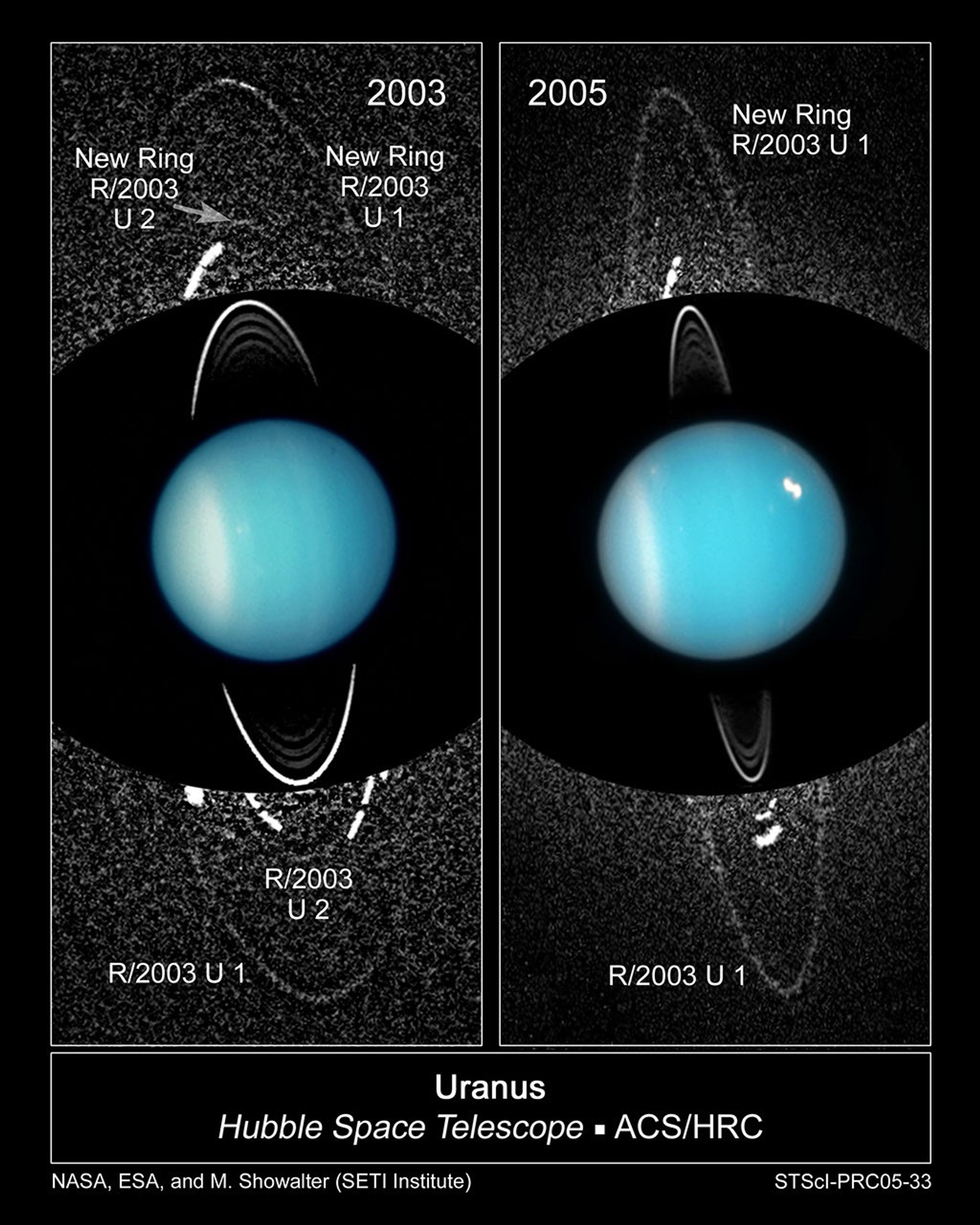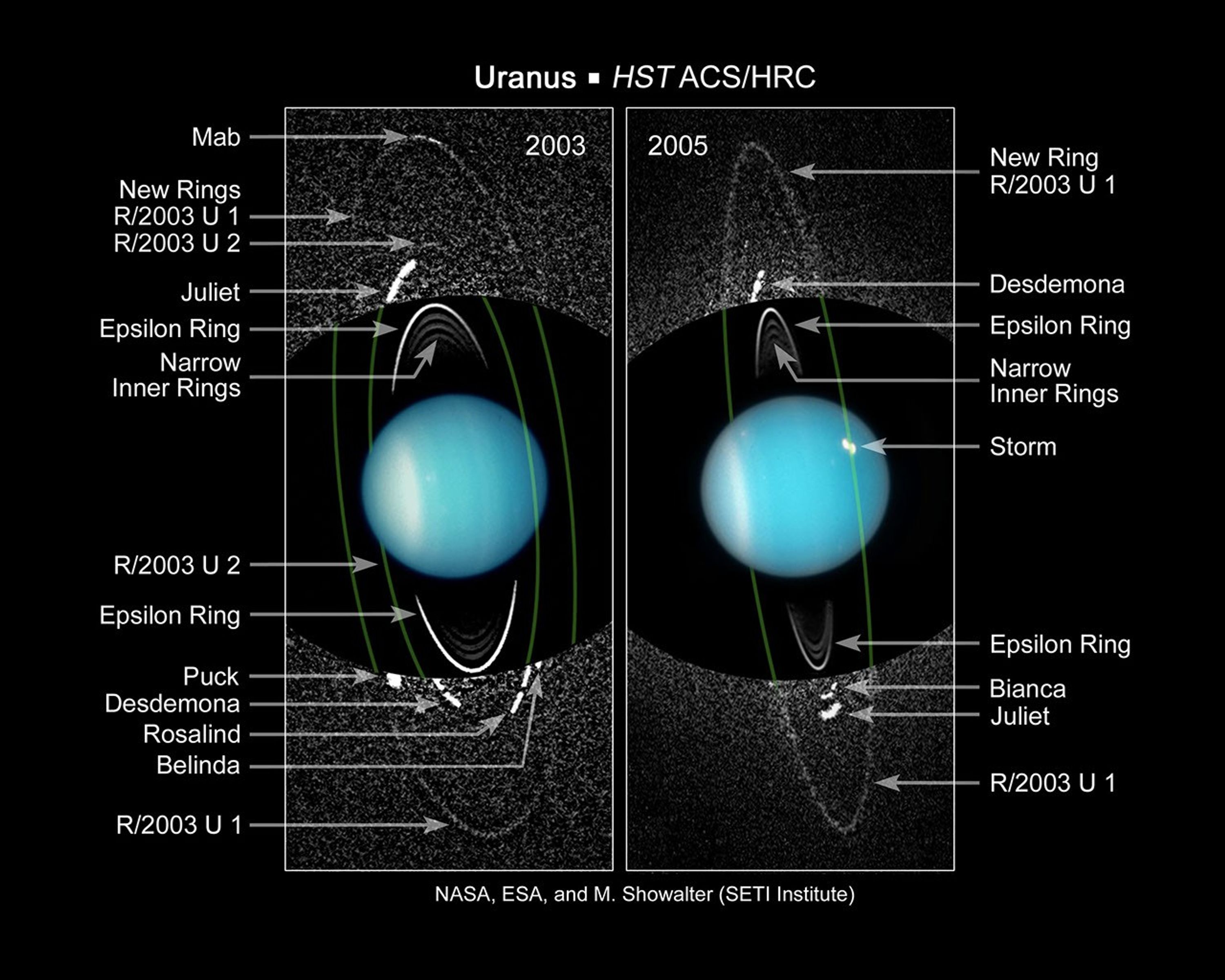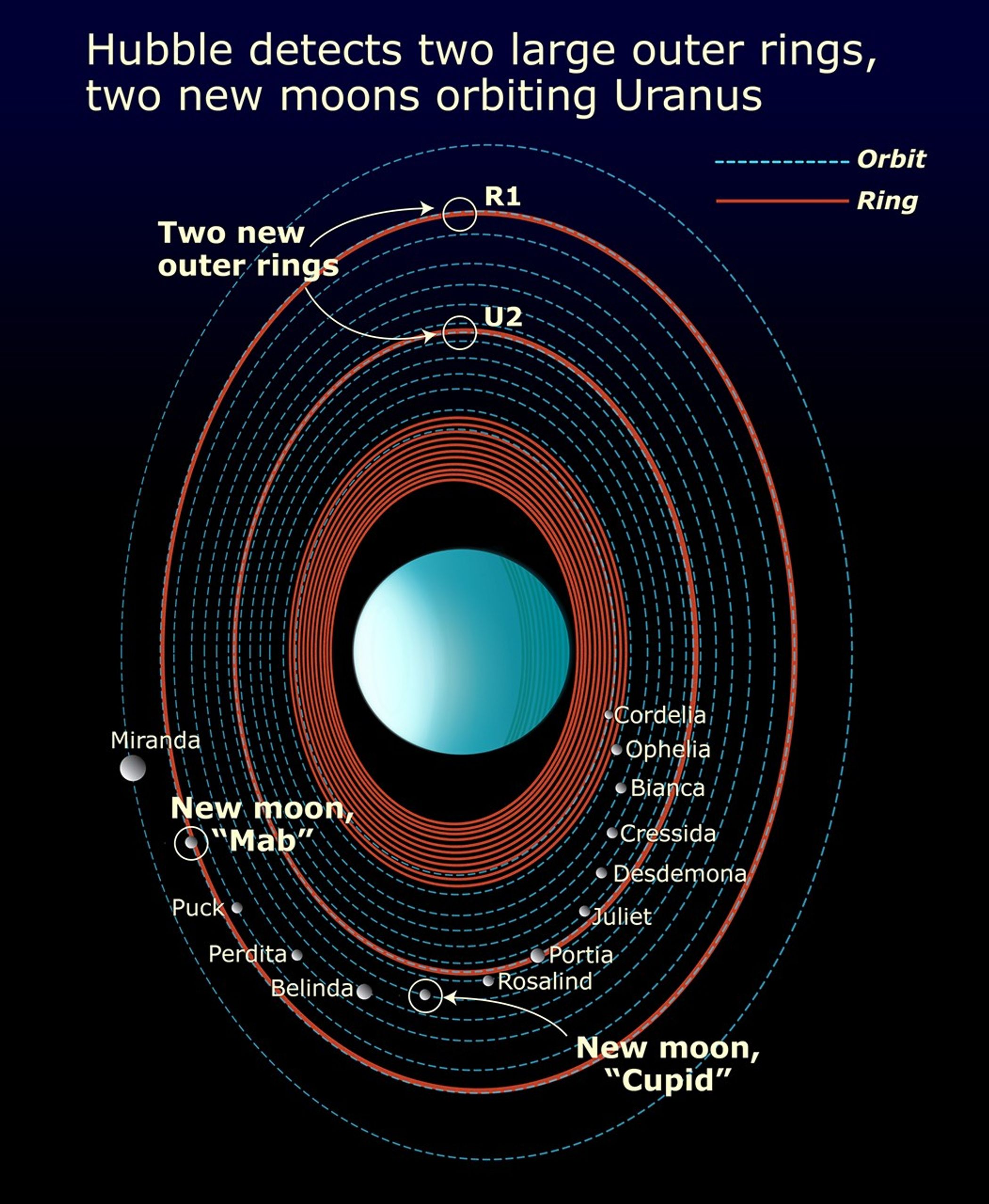1 min read
Uranus, 2003

About the Object
- DistanceDistanceThe physical distance from Earth to the astronomical object. Distances within our solar system are usually measured in Astronomical Units (AU). Distances between stars are usually measured in light-years. Interstellar distances can also be measured in parsecs.The semi-major axis of Uranus's orbit about the sun is 19.18 Astronomical Units (A.U.) or roughly 2.9 billion km.
- DimensionsDimensionsThe physical size of the object or the apparent angle it subtends on the sky.Uranus (without rings) has a diameter of roughly 32,000 miles (51,000 km) at the equator.
About the Data
- Data DescriptionData DescriptionProposal: A description of the observations, their scientific justification, and the links to the data available in the science archive.
Science Team: The astronomers who planned the observations and analyzed the data. "PI" refers to the Principal Investigator.10473: M. Showalter (SETI Institute) and J. Lissauer (NASA Ames Research Center)
- InstrumentInstrumentThe science instrument used to produce the data.HST>ACS/HRC
- Exposure DatesExposure DatesThe date(s) that the telescope made its observations and the total exposure time.2003
- FiltersFiltersThe camera filters that were used in the science observations.Clear, F330W (U), F475W (g), F606W (V), F814W (I)
- Object NameObject NameA name or catalog number that astronomers use to identify an astronomical object.Uranus
- Object DescriptionObject DescriptionThe type of astronomical object.Planet
- Release DateDecember 22, 2005
- Science ReleaseNASA’s Hubble Discovers New Rings and Moons Around Uranus
- Credit
Related Images & Videos

Newly Discovered Moon and Rings of Uranus
These composite images from several observations by NASA's Hubble Space Telescope reveal a pair of newly discovered rings encircling the planet Uranus. The left composite image is made from Hubble data taken in 2003. The new dusty rings are extremely faint and required long...

Newly Discovered Moons and Rings of Uranus (Annotated)
These composite images from several observations by NASA's Hubble Space Telescope reveal a pair of newly discovered rings encircling the planet Uranus. The left composite image is made from Hubble images taken in 2003. The new dusty rings are extremely faint and required long...
Share
Details
Last Updated
Aug 17, 2025
Contact
Media
Claire Andreoli
NASA’s Goddard Space Flight Center
Greenbelt, Maryland
claire.andreoli@nasa.gov






























